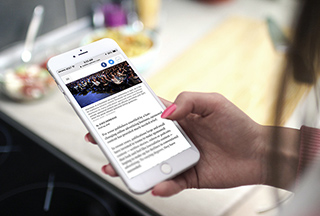

Thanks to continuing trends among marketers trying to reach audiences in a more fluid way and users increasingly adopting ad blocking software, native advertising is expected to increase heavily in 2017. According to Forbes, it’s expected to drive 74% of ad revenue by 2021.
Native advertising has been around a while and there are some obvious trends that work as well as some recent changes that are catching on. Namely many publishers have gotten aboard to serve branded content directly on their sites. The great thing about native advertising is that it aspires to the kind of advertising the internet has always been begging for – contextual advertising that is actually useful and informative to its target audiences. With this approach, truth in advertising has never been more important.
So what is native advertising and how do companies benefit from it?
First of all, in its essence, it’s a blend of display, content marketing, social, paid search and public relations. There are 5 major types of native advertising:
- Paid Search
- Sponsored listings
- Content recommendation Engines (recommended articles)
- In-feed units (content on publishers sites)
- In-ad with native elements (rich media ads with native qualities)
The most growth in 2017 will be in recommended articles content (usually lives on a brand’s site) and in-feed content (lives on the publisher’s site). These can be almost any kind of content, including video, infographics, articles, white papers, interactive experiences and more. The idea is to place your informative content in the right context. For instance, a skateboard company that sponsors a pro-circuit skater might generate a video describing his techniques. That video can then be served as sponsored content on a publisher’s site, as a link in related articles on a publisher’s site that then is served on the brand’s website or as a shareable social media piece.
How do you place native ads?
There are numerous platforms, like Outbrain, that work with large and small publishers to place native ads. The ads are intended to blend into the publisher’s site in a non-disruptive way, very much unlike traditional display ads, usually in the format of related articles somewhere on the page. There are also premium content platforms, like Polar, who work with publishers to create even more integrated placements of content. You can also work with individual publishers who have developed their own native advertising products. For instance, The New York Times helps brands develop content and serves it on their domain with a contextual label letting the reader know it’s paid content. In any case, the best practice is for the native ads to blend in yet be responsibly labeled as advertising so the user has the right expectations.
Where to place native ads?
Native ads function best when they provide useful information that is naturally interesting to the audience. It’s a way to further brand engagement with a potential customer by providing useful and informative content. Ideally, you want your native ads to feel like a logical extension of what the viewer has already indicated is interesting to them. This means picking the right publishers to be visible on and tailoring content for different audiences. Content developed for native advertising campaigns is also a natural fit to be shared on social media.
How to get started?
Like all advertising, the first step is to identify business objectives and your target audiences. Then you can begin to identify what kind of content would engage your potential customers and what publishers would be best to reach them.
If you’re interested, mmg can provide a free consultation about what you want to achieve with native advertising.